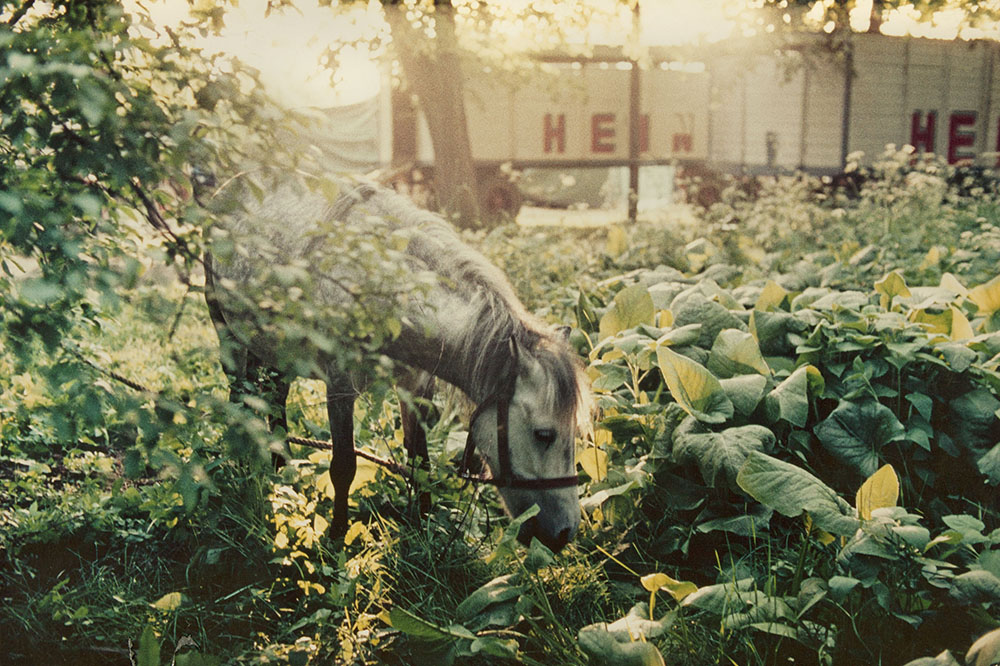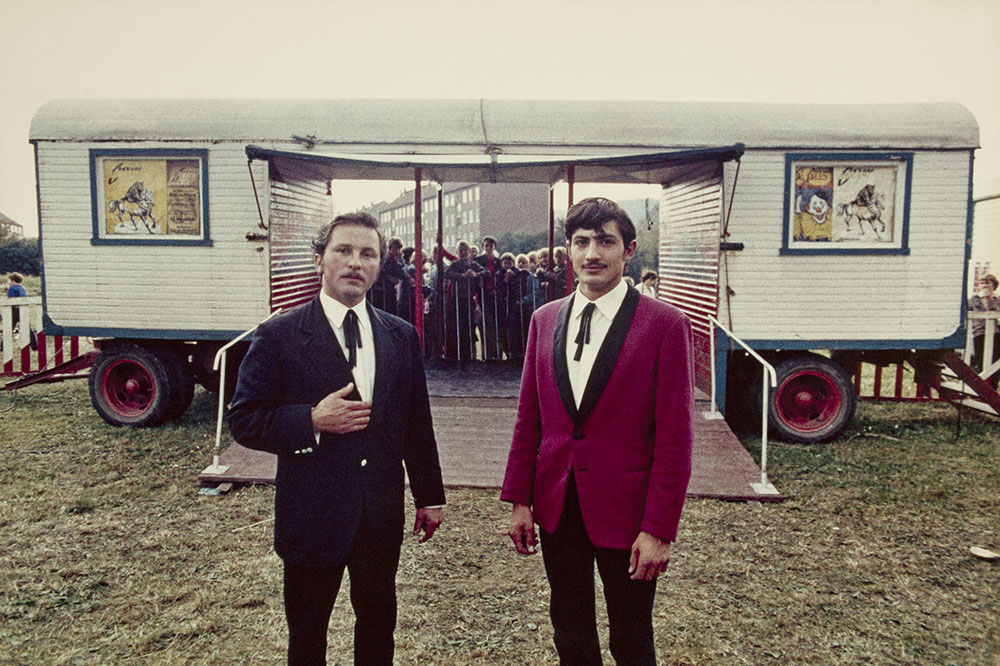Museum für Photographie Braunschweig Exhibits work from four women photographers Ute Mahler, Käthe Buchler and Julia Margaret Cameron in Double Dialogues
A newly opened exhibition at the Museum für Photographie Braunschweig, Germany, explores the work of three heroines: Contemporary Heroine Ute Mahler (b. 1949) and Historical Heroines Käthe Buchler (1876-1930) and Julia Margaret Cameron (1815-1879). Accompanied by the works of Ute Behrend (b. 1961), Double Dialogues brings together these varied practitioners in a study of imagined, yet tangible, alternatives to daily life.

Zirkus Hein, 1973-74 © Ute Mahler
In encouraging conversations between these generations of image-makers, Double Dialogues first presents the work of contemporary artist, Ute Behrend. In her practice across the mediums of photography and film, Behrend displays, both atmospherically and aesthetically, a subtle sense of the poetic.
Following a visual concept through which two images from different contexts, real or staged, are narratively and formally assigned to each other, Behrend explores themes of adolescence, role models and our relationship to nature. Works such as Cowboys / Kuh ohne Kopf & Cowboypuzzle (Cowboys / Cow without a head & cowboy puzzle), with their bold use of colour and modern take on composition, establish Double Dialogues’ narratives of the child-like and the fantastical.
A group of early works by heroine Ute Mahler continue these themes of youth and the imagination. Recording moments from the everyday life of a family-run circus, Zirkus Hein (Circus Hein) was created in 1973-74, representing Ute’s first comprehensive group of works.
Famed for her stark portrayals of life in the German Democratic Republic, images from the series follow the photographer’s tradition of capturing untraceable, yet undeniable melancholy. However, set among the wonders of the circus, this body of work also possesses a certain hazy charm, in keeping with Double Dialogues’ exploration of the dream-like.
Taken form the Museum für Photographie Braunschweig’s own collection, images by Käthe Buchler are something of a departure from her best-known works. Far in subject and in feeling from her depictions of injured German soldiers, these images feature families at play, with Käthe’s poetic staging continuing Double Dialogue’s exploration of constructed visual worlds.
Perhaps most notable in this regard, is the image entitled Märchenszene im Atelier von Wilhelm Müller (Wolf und sieben Geißlein) (Fairy tale scene in Wilhelm Müller’s studio (Wolf and seven little goats)). This photograph, with each subject hidden beneath a blank-eyed mask and each child dressed playfully in a ruff, artfully creates the specific combination of wonder and disquiet, often experienced in dreams.

Käthe Buchler, Märchenszene im Atelier von Wilhelm Müller (Wolf und sieben Geißlein)
Also taken from the museum’s own collection, is a single image by heroine and pioneering portrait photographer, Julia Margaret Cameron. Described by Marta Weiss, Curator of Photographs at the Victoria and Albert Museum, London as “one of the most important and innovative photographers of the 19th century”, Julia is best known for her portraits of the leading artists and intellectuals of her time.
However, it is not the notable names of her subjects that see her works included here, but rather her unconventional, ethereal, and highly accomplished style of image-making. Responsible for the iconic 1872 portrait of Alice Liddell, better known as ‘the real Alice in Wonderland’, Julia’s other-worldly style of portraiture is just as evident in the image presented by Double Dialogues: Junge Frau mit Ananas (Young Woman with Pineapple).
Though in the images of Mahler, Buchler, Cameron and Behrend, Double Dialogues presents four vastly different approaches to image-making, the exhibition succeeds in creating meaningful discourse between these accomplished bodies of work. Across generations and techniques, these four photographers are tied satisfyingly together by their interpretations of the everyday; of the moments in which the imagined and the mundane collide.
Double Dialogues is on show at the Museum für Photographie Braunschweig, Germany until 22nd August 2021.















